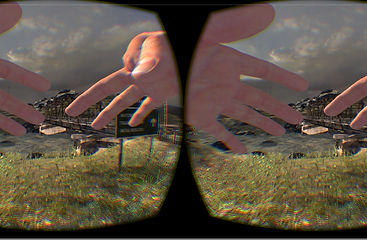Michael Budai
Introduction
This was my final year dissertation project and the studying of spatial and mental immersion within games.This included looking into the techinques and technolgies that faciitate immersion. The project also included the participation of students and collecting of results.
The Unity game engine had been used to create the immersive environment in which the player had to navigate the map using the Oculus Rift. The project included the use of the Leap Motion in which the sensor would detect the users hand.
Both technologies where combined for the project and worked simultaneously together to create a 3D immersive game environment.


Oculus Rift
The Oculus Rift DK2 was used for the project in which this had more features such as Low persistence OLED display and a Positional tracking camera. This also needed the the SDK in order to work and to also display the builds on different montior.
Many testing was done to intergrate the Oculus with Unity and also the Leap Motion. The testing included the creation of various builds and demos within Unity with simple scenes and primative objects.
Working with this technology for the first time had given me the opportunity learn how this technology can be used in the future of games.

Leap Motion
The Leap Motion is a sensor that can detected hands and can display and simulate them within the game engine Unity. This technology was used with the Oculus Rift to create the final product.
The product was tested on various students thoughout the university in order to find out what creates 3D immerisive game environments. Participents were required to fill in a questionnare and the results are analysed. This project had expanded my understanding of virtual reality (VR) in games and how it can be intergated.
Oculus Rift and Leap Motion Project